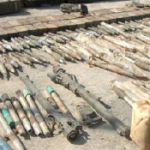Missile Watch – February 2010
Missile Watch
A publication of the FAS Arms Sales Monitoring Project
Vol. 3, Issue 1
February 2010
Editor: Matt Schroeder
Contributing Author: Matt Buongiorno
Graphics: Alexis Paige
Contents:
Afghanistan: No recent discoveries of shoulder-fired, surface-to-air missiles in insurgent arms caches
Eritrea: UN slaps arms embargo on major missile proliferator
Iraq: Fewer public reports of seized shoulder-fired missiles in Iraq, but MANPADS still a threat
Ireland: Alleged plot to shoot down a police helicopter may have involved surface-to-air missile
Myanmar: 300 shoulder-fired missiles in insurgent arsenal, claims Thai Colonel
North Korea: North Korean arms shipment included MANPADS, Thai report confirms
Peru: Igla missiles stolen from Peruvian military arsenals, claims alleged trafficker
Spain: Failed assassination attempts underscore the risks for terrorists of relying on black market missiles
United States: Congress to receive DHS report on anti-missile systems for commercial airliners in February
United States: Documents from trial of the “Prince of Marbella” reveal little about his access to shoulder-fired missiles
United States: No new international MANPADS sales since 1999
Venezuela: U.S. receives “assurances” from Russia regarding controls on shoulder-fired missiles sold to Venezuela, but questions remain
This issue of Missile Watch features big news out of Thailand. A North Korean arms shipment seized by Thai officials in December contained “five crates of MANPADS SAM[s]”, according to an official Thai government report. The report, which was obtained by Bloomberg News in late January, appears to confirm North Korea as an illicit source of shoulder-fired, surface-to-air missiles. Depending on the origins and model of the missiles, this case could have profound implications for international efforts to curb missile trafficking. Also notable are reports of a Peruvian trafficking ring that stole at least seven Strela and Igla missiles from government arsenals and sold them to Colombian rebels, and of insurgent arsenals in Myanmar that contain 300 missiles – a stockpile comparable in size to the holdings of many small states. These reports illustrate the continued availability of illicit missiles to armed groups despite a decade-long international campaign to strengthen export controls and secure government stockpiles.
The news isn’t all bad, however. Recent reports suggest that most armed groups continue to rely – often clumsily – on older first-generation infra-red seeking missiles, which are difficult to use effectively and often malfunction, as evidenced by the Basque terrorist group ETA’s failed attempts to shoot down the Spanish Prime Minister’s plane in 2001. This is not the first failed terrorist missile attack, and it will not be the last. In 2002, for example, an al-Qaeda affiliated group in Kenya armed with two SA-7b missiles missed an Israeli airliner as it was leaving Mombasa. The more of these spectacular failures that come to light, the less demand there will be amongst armed groups for first and second generation missiles. Or at least that is the hope. In those comparatively rare cases when terrorists are able to acquire and effectively use newer missiles, modern anti-missile technology may provide an effective last line of defense, as illustrated by the recent “multiple IR engagement” thwarted by the missile defense system on a Chinook helicopter reportedly operating in Iraq.[1] Whether this last line of defense will be extended to commercial airliners will be determined, in part, by Congress’ reaction to Department of Homeland Security’s long-awaited report on its Counter-MANPADS program, which will be delivered to key congressional committees this month.
Also encouraging are recent actions taken against missile trafficking and the governments that facilitate it. The same month that the Thai government moved against missile trafficking in their country, the UN Security Council imposed an arms embargo on Eritrea, the supplier of thousands of weapons, including surface-to-air missiles, to the militant Somali group al Shebab. The embargo comes none too soon. A spokesman for the group recently threatened to come to the aid of their “Muslim brothers” in Yemen,[2] an apparent reference to the al Qaeda affiliate responsible for the failed attack on the US-bound airliner in December. Extensive involvement in Yemen’s civil war by al Shebab would be very bad for the Yemeni government and its western allies, especially if the militants bring their missiles. It remains to be seen if the embargo will motivate Eritrea to stop arming Somali militants, or at least stop arming them with sophisticated light weapons.
Country Reports
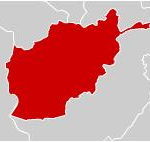 Afghanistan: No Recent Discoveries of Shoulder-fired Antiaircraft Missiles in Insurgent Arms Caches, Confirms ISAF Spokesperson
Afghanistan: No Recent Discoveries of Shoulder-fired Antiaircraft Missiles in Insurgent Arms Caches, Confirms ISAF Spokesperson
No MANPADS were found in seized insurgent arms caches in late 2009, according to the US military. A spokesperson from the International Security Assistance Force Joint Command (IJC) told the Federation of American Scientists that “[t]he ISAF Joint Command intelligence section is not aware of any man-portable surface-to-air missile finds by ISAF units since the IJC’s inception in October 2009.”[3] To date, the ISAF has largely been spared the problems associated with the widespread proliferation of surface-to-air missiles that has plagued Coalition forces operating in Iraq (see Missile Watch #3: Black Market Missiles Still Common in Iraq).
While the reasons for the difference in illicit missile activity in Iraq and Afghanistan are not entirely clear, one likely factor is availability. Shortly after the US invasion, hundreds of missiles were looted from unsecured arms depots scattered across Iraq. Much of the looting, notes Government Accountability Office in a 2007 report, “…was conducted by organized elements that were likely aided or spearheaded by Iraqi military personnel,”[4] – future members of insurgent groups. There is no comparable domestic source of missiles for the Taliban. The absence of a convenient domestic source would not preclude acquisition of shoulder-fired missiles on the international black market, however, and there is strong evidence that the Taliban has acquired missiles – namely Chinese HN-5s – from sources abroad, but their numbers appear to be limited. The extent to which these missiles have been used against ISAF aircraft is unknown. Publicly available information on insurgent activity suggests, however, that few if any of the missiles have been used successfully.
 Eritrea: UN Slaps Arms Embargoes on Major Missile Proliferator
Eritrea: UN Slaps Arms Embargoes on Major Missile Proliferator
After years of supplying weapons to Somali militants in violation of UN Security Council resolutions, the UN has slapped an arms embargo on the government of Eritrea. Resolution 1907, which was approved by a 13-1 vote in the Security Council in December,[5] imposes a ban on the international transfer of arms to and from Eritrea. It also authorized UN member states to inspect cargo crossing their territory if a violation is suspected, and to seize and dispose of any illicit weapons that are discovered.
Eritrea ranks high on the list of MANPADS proliferators. In recent years, UN investigators have documented shipments containing dozens of MANPADS from Eritrea to Somalia in violation of a long-standing UN arms embargo. In 2007, an SA-18 missile “delivered by Eritrea,” according to UN investigators,[6] was used by Somali militants to shoot down a Belarusian cargo aircraft departing from Mogadishu. The Eritrean government has denied the accusations, but additional evidence collected by investigators in recent years appears to support the earlier claims. An SA-18 Igla missile “found in Somalia” by UN investigators, for example, was later traced back to a shipment of Russian weaponry delivered to Eritrea in 1995.[7]
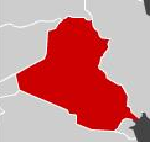 Iraq: Fewer public reports of seized shoulder-fired missiles in Iraq, but MANPADS still a threat
Iraq: Fewer public reports of seized shoulder-fired missiles in Iraq, but MANPADS still a threat
Publicly available reports of shoulder-fired, surface-to-air missiles discovered in insurgent arms caches in Iraq dropped off precipitously in 2009, but the reason for this decline is unclear. A survey of English-language media and US military sources yielded information on only a handful of illicit MANPADS recovered from arms caches in 2009, as opposed to dozens in previous years (See Missile Watch #3: Black Market Missiles Still Common in Iraq). Given the rigor of US and Iraqi efforts to recover illicit weapons and dismantle arms trafficking networks, it is possible that terrorists and insurgents did indeed have access to fewer missiles in 2009. It is also possible, however, that seized MANPADS simply are not being reported as frequently, possibly for security reasons. When queried about the apparent decrease, a representative from Multi-National Forces-Iraq declined to comment, saying only that “[f]or operational security, we are unable to provide such details…”[8]
Regardless of the reason for the decline in reported seizures, MANPADS remain a threat in Iraq, as evidenced by a recent incident in which a Chinook military helicopter was engaged by “multiple IR MANPADS.” The attack, which was first reported by Aviation Week’s David Fulghum, was reportedly thwarted by the helicopter’s anti-missile system.[9]
 Ireland: Alleged plot to shoot down a police helicopter may have involved surface-to-air missiles
Ireland: Alleged plot to shoot down a police helicopter may have involved surface-to-air missiles
In December, the Belfast Telegraph reported that “[d]issident republicans” had obtained an unspecified surface-to-air missile and were “…planning to use it to shoot down a helicopter full of police officers…” The article provides no additional details on the missile or the alleged plot, although an unidentified “police source” suggests that the “missile” may instead be a rocket-propelled grenade: “They [the dissidents] have access to rocket-propelled grenades or other surface-to-air missile [sic] and one of their priorities is to take out a helicopter.”[10] The Irish government and the Independent Monitoring Commission declined to comment on the story, and an email to the author of the Telegraph article went unanswered.
Too little information is available to assess the accuracy of the Telegraph’s claims. Yet even if Irish dissidents have access to a missile, a successful attack is far from guaranteed. Like many terrorist and insurgents worldwide, armed groups in Ireland have a long, largely unsuccessful history of illicit activity involving shoulder-fired missiles. Repeated attempts by the IRA to acquire Stinger missiles in the United States ended in jail time for many of the would-be missile traffickers,[11] and even when the group succeeded in procuring missiles with help of the Libyan government,[12] the IRA never effectively incorporated the missiles into its campaign against the British.[13] In the late 1990s, the group reportedly supplied some of its missiles to the Basque group ETA, who also failed to use them effectively (See below: “Spain: Alleged ETA member reveals details of failed attempts to assassinate Spanish prime minister”).
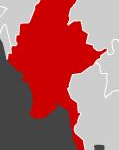 Myanmar: 300 shoulder-fired missiles in insurgent arsenal, claims Thai Colonel
Myanmar: 300 shoulder-fired missiles in insurgent arsenal, claims Thai Colonel
A Thai military official interviewed by the International Herald Tribune in November claimed that the United Wa State Army, a Burmese insurgent group, possesses 300 “shoulder-fired anti-aircraft missiles”[14] – a stockpile that is comparable in size to those of many small states. No additional details on the missiles were provided.
According to Jane’s Information Group, the Wa’s missile holdings consist of older SA-7s acquired in the early 1990s from “Cambodian black market sources,” and more sophisticated HN-5Ns from China.[15] These reports appear to be a decade old, however, so it is possible that the composition of the Wa’s current missile stockpile is very different.
If Colonel Peeranate’s estimate is accurate and the missiles are operational, the Wa’s missile stockpile is one of the largest non-state arsenals in the world. Little is known about the security of the Wa’s weapons, but the general lack of accountability and formal controls on insurgent arms caches and the size of the stockpile raises concerns about theft, loss and diversion, and the possibility that some of the missiles will end up on the black market.
 North Korea: North Korean arms shipment included man-portable air defense systems, Thai report confirms
North Korea: North Korean arms shipment included man-portable air defense systems, Thai report confirms
The Federation of American Scientists has learned that a cargo plane loaded with weapons from North Korea that was grounded in Bangkok in December contained man-portable air defense systems. According to a Thai report to the UN Security Council obtained by Bloomberg in January, the cargo contained “five crates of MANPADS SAM[s]”. The manufacturer, model and year of the MANPADS are not identified.[16] This information is required to fully assess the implications of the seizure, and to craft strategies for preventing similar shipments.
It is possible that the missiles were manufactured in North Korea, which has produced the Chinese HN-5 and the Soviet SA-14 and SA-16 under license,[17] and the Soviet SA-7 and US Stinger missile, which it reverse-engineered from missile technology acquired from Egypt in the 1970s and from the Afghan Mujahideen in the 1980s, respectively.[18] Another possibility is that the missiles were foreign-made and were transiting through, or were re-exported from, North Korea. This scenario could also have profound implications, depending on the origin and age of the missiles. Newly manufactured foreign missiles would suggest a recent government-to-government sale to North Korea – an egregious violation of the spirit if not the letter of international agreements on controlling MANPADS – or diversion from government stockpiles, which would likely be indicative of serious shortcomings in stockpile security policies and practices.
North Korea as a source of illicit MANPADS poses a significant challenge for policymakers since few if any of the diplomatic carrots and sticks used to secure MANPADS elsewhere would be effective vis-a-vis the Hermit Kingdom. Interdiction efforts associated with UN Security Council Resolution 1874 will likely make it more difficult to traffic in weaponry from North Korea, but shoulder-fired missiles are easy to smuggle, and adequately screening the contents of every plane and ship departing from North Korea would be impossible. The best that can reasonably be hoped for is that vigilance by North Korea’s neighbors and robust patrolling of international waters will limit North Korea’s arms smuggling in the near term, and that prioritization of the MANPADS proliferation threat by the six-party nations in negotiations with North Korean officials will yield a longer term solution.
The Thai report identifies Mahrabad Airport in Iran as the aircraft’s destination, although Thai officials have subsequently stated that Sri Lanka and the United Arab Emirates were also listed as stops in the flight documentation.[19] The Iranians have denied any involvement in the transfer, pointing out that they have no need for the shipment since Iran’s defense industry produces its own “modern weapons”.[20] But it is possible that the Iranians had ordered the weapons not for their own use but for their proxies in Lebanon or elsewhere. Foreign missiles would allow the Iranians to provide like-minded armed groups with much-needed air defense systems while maintaining plausible deniability regarding their role in the transfer. A similar strategy was pursued by the United States during the clandestine campaign to arm and train the Afghan Mujahideen during the Soviet occupation.[21] If the North Korean weapons were bound for Iran, they may have been intended for a similar purpose.
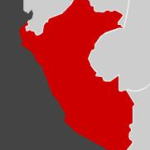 Peru: Igla missiles stolen from Peruvian Military, claims alleged trafficker
Peru: Igla missiles stolen from Peruvian Military, claims alleged trafficker
A self-proclaimed “logistics specialist” for Colombian rebels reportedly obtained seven Stela and Igla surface-to-air missiles from the arsenals of the Peruvian military according to the Miami Herald and the Lima-based La Republica newspaper. Ecuadorian national Freddy Torres allegedly acquired the missiles, along with other weapons, from a trafficking ring comprised of members of the Peruvian air force, army and police.[22] Four of the missiles were purchased between May and October 2008 and the remaining three were purchased in 2009, according to Juan Tamayo of the Miami Herald. Each of the missiles was reportedly purchased for “the sum of 45,000 US dollars.”[23]
Assuming man-portable Strela and Igla missiles were indeed stolen from Peruvian arsenals and sold to Colombian rebels, this case could have significant implications. The Revolutionary Armed Forces of Colombia (FARC) has tried unsuccessfully for years to acquire missiles capable of countering the Colombian armed forces growing fleet of fixed and rotary-wing aircraft, which are critical to its counter-insurgency operations. While a handful of Strela and Iglas will not turn the tide of the war in the FARC’s favor, the missiles could be very disruptive to Colombian air operations, at least in the short term.
Of greater consequence is the potential terrorist threat from the missiles. In the hands of a trained operator, a well-maintained missile poses a significant threat to civilian planes, including airliners; at least 45 civilian aircraft have been shot down by man-portable air defense systems worldwide since 1975.[24] The missiles are of significant value to the FARC’s war against the Colombian government and therefore the rebels are unlikely to use the missiles against commercial airliners. However, they could be used against high-value civilian targets such top government or military officials. The missiles could also be stolen or sold on the black market, where they would they could be acquired by terrorists with designs on an airliner.
The missile theft is also a critical test of the region’s commitment to combating the shoulder-fired missile threat. In 2005, the 35 members of the Organization of American States (OAS) adopted AG/RES.2145, a set of guidelines that urges member states to, inter alia, “…adopt and maintain strict national controls and security measures on Man-Portable Air Defense Systems and their essential equipment.” These guidelines include specific, rigorous stockpile security measures, such as separate storage of missiles and launchers, 24-hour surveillance, and strict controls on access to missiles.[25] The diversion of multiple missiles over a period of months raises serious questions about the Peruvian government’s implementation of these guidelines and the security of the rest of its missile stockpile, which numbers in the hundreds, according to Jane’s Information Group.[26] A robust response to this incident would show the region and the world that the OAS and its member states take the illicit trade in terrorist technology seriously and are willing to match rhetoric with action.
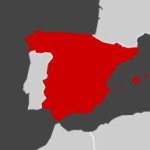 Spain: Failed assassination attempts underscore the risks for terrorists of relying on black market missiles
Spain: Failed assassination attempts underscore the risks for terrorists of relying on black market missiles
Intelligence obtained from an alleged member of the Basque terrorist group ETA revealed three failed attempts to shoot down the Spanish prime minister’s plane with a shoulder-fired, surface-to-air missile acquired from the Irish Republican Army in 1999. According to the Telegraph, the plots came to light after the arrest of the suspected ETA member, who reportedly told Spanish investigators that the group had tried three times in April and May 2001 to shoot down the plane but that the missile had malfunctioned each time. A letter addressed to the IRA discovered in the suspect’s home reportedly complains about defective missiles allegedly sold to ETA by IRA members based in Germany.[27] The missiles were seized from an ETA arms cache by French authorities in 2004.[28]
Media reports do not indicate whether authorities believe that the missiles used in the botched attack was indeed faulty or was used incorrectly. Contrary to popular belief, shoulder-fired missiles aren’t simply point-and-shoot weapons; they require training to use effectively, and it is not clear what training, if any, ETA members received in the operation of the missiles. Regardless of the reason for the failed attacks, this case underscores the risks for terrorists of relying on black market missiles, especially when the missiles are first generation technology that is nearing the end (or is past) its estimated shelf life and may have been tampered with or stored improperly. It is hoped that ETA’s bumbling – along with other spectacular failures like the unsuccessful missile attack on an Israeli airliner in Kenya in 2002 – will reduce black market demand for the most widely available (i.e. first generation) shoulder-fired missiles as terrorists recognize the folly of planning high-profile attacks around weapon systems that they do not fully understand and that may not function properly.
 United States: Congress to receive DHS report on anti-missile systems for commercial airliners in February
United States: Congress to receive DHS report on anti-missile systems for commercial airliners in February
The Federation of American Scientists has learned that a long-awaited report on the feasibility of installing anti-missile systems on commercial airliners is nearly finished, and will be delivered to Congress in February. “The report is nearing the end of review; we are still expecting a February delivery to Hill staff,” a DHS spokesperson confirmed in a correspondence with the Federation of American Scientists. The report, which will be sent to the House and Senate Appropriations Committees, summarizes the results of a program launched in 2003 to assess the “…viability, economic costs and effectiveness of adapting existing technology from military to commercial aviation use.” As noted in the last issue of Missile Watch, the response from Congress to the report will be a critical indicator of whether its early enthusiasm for outfitting commercial airliners with anti-missile systems – a multi-billion dollar undertaking – has survived DHS’ lengthy evaluation process and a constant barrage of competing agenda items.
United States: Documents from trial of the “Prince of Marbella” contain additional information on shoulder-fired missiles
Court documents recently obtained by the Federation of American Scientists provide some additional insight into the historic case of famed arms trafficker Monzer Al Kassar, but many important questions remain unanswered. In 2007, Kassar was arrested after allegedly agreeing to sell thousands of weapons, including shoulder-fired, surface-to-air missiles, to undercover informants posing as members of the Revolutionary Armed Forces of Colombia (FARC). A year later, Kassar was extradited to the United States and tried in New York, where he was convicted of, inter alia, conspiring to “acquire and export anti-aircraft missiles.”[29] The surprising arrest and conviction of Kassar brought an abrupt end to the career of one of the most prolific traffickers in recent history. According to the US government, clients of Kassar’s have included armed groups in Bosnia, Brazil, Croatia, Cyprus, Iraq, Iran, and Somalia, among others.[30]
Hundreds of court documents obtained by the Federation of American Scientists provide additional insight into the case, including Kassar’s offer to sell MANPADS to Colombian rebels. Summaries of phone conversations between Kassar and the DEA informants indicate that Kassar “…spoke about various types of surface-to-air missile systems– including SAM-7s, SAM-16s, and SAM-18s – and the systems’ respective abilities to destroy U.S. helicopters.” Previously released documents only reference the SA-7, a first generation Soviet-era missile that is easier to acquire and less capable than the SA-16 and SA-18. However, none of the documents reveal whether Kassar actually had access to the missiles, or – if he did – how many he had or where he acquired them. The Federation of American Scientists will continue to research these questions and report any additional findings in future issues of Missile Watch.
United States: No New International MANPADS Sales since 1999, says Raytheon
A spokesperson for the US defense firm Raytheon recently told the Federation of American Scientists that the U.S. government has not entered into new deals for Stinger MANPADS with foreign clients since 1999. In an email correspondence, Raytheon official Ty Blanchard told said that “[s]ince 1999, the U.S. government has denied requests from non-NATO countries asking for Stinger MANPADS. We have not had any requests from NATO countries in the last ten years.”[31]
This record of restraint illustrates the disparity in the policies of the major arms exporting states. Even as the US has curtailed international sales of man-portable Stingers, other countries have sold advanced systems to governments with dubious stockpile security and end-use controls.[32] Failure to align the policies of exporting countries could erode nascent global standards for MANPADS exports and undo much of the progress toward eliminating the terrorist missile threat achieved to date.
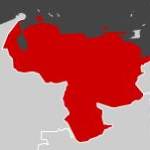 Venezuela: U.S. receives “assurances” from Russia regarding controls on shoulder-fired missiles sold to Venezuela, but key questions remain
Venezuela: U.S. receives “assurances” from Russia regarding controls on shoulder-fired missiles sold to Venezuela, but key questions remain
The Federation of American Scientists has learned that US officials have received “assurances” from the Russian government regarding end-use controls on SA-24 MANPADS sold to Venezuela, but detailed information on the nature and implementation of these controls remain scant. This information is critical to determining whether the SA-24s and the “thousands” of additional missiles[33] that Venezuelan President Hugo Chavez claims to be importing are in danger of being diverted to armed groups in the region or elsewhere.
In response to a query about the sale, a State Department spokeswoman told the Federation of American Scientists that U.S. officials “…have expressed our concerns to the Russian government on the control and security of arms transferred to Venezuela” and that they have “…received assurances from the Russian government that the deal conforms with end-use controls that meet international standards.”[34] The official did not indicate whether Russia has provided the US government with a list of specific controls, or the extent to which these controls have been implemented. The Russian and Venezuelan governments have yet to respond to requests from the Federation of American Scientists for additional information.
The most prominent set of ‘international standards’ on MANPADS controls are the Elements for Export Controls of MANPADS. Under the Elements, Russia has agreed to “…satisfy itself of the recipient government’s willingness and ability to implement effective measures for secure storage, handling, transportation, use of MANPADS material, and disposal or destruction of excess stocks to prevent unauthorised access and use.”[35] A more detailed set of procedures is laid out in an annex to the OSCE’s Best Practice Guide on National Procedures for Stockpile Management and Security of MANPADS, which the Russian government helped to draft. Minimally, the Russian government should ensure that Venezuela’s stockpile security and end-use policies and practices conform to the Wassenaar Arrangement’s Elements and the OSCE’s Best Practice Guide, and the Organization of American States’ Guidelines for Control and Security of MANPADS. Given the history of diversion from Venezuela’s arsenals,[36] regular on-site inventories and inspections by Russian officials are also merited. Failure to take these steps would raise serious questions about the Russian government’s commitment to implementing key international agreements and guidelines, including guidelines it helped to draft.
Additional News & Resources (11/ 2009- 1/2010)
- “Sarachandran jailed for 26 years for trying to aid Tamil Tigers,” National Post, 23 January 2010.
- “Helo-Protecting Advanced Sensors Hurried,” Aviation Week, 21 January 2010.
- “More Advanced SAMs Emerging in Combat Zones,” Aviation Week, 13 January 2010.
- “Missile defense: post DHS,” Avionics Intelligence, 7 January 2010.
- “R.O. CONGO: 750,000 dangerous items demolished in two years,” Mines Advisory Group, 11 December 2009.
- “Albanian Press Review – December 1,” Balkan Insight, 1 December 2009. The article includes a brief reference to an article in the Albanian newspaper Gazeta Tema about alleged transfers of MANPADS from Albania to Hezbollah. The full article is available on Gazeta Tema’s website, but it is in Albanian.
- “Cyprus Confronts Its MANPADS Menace,” OSCE Magazine,December 2009.
- “Powder Keg – Unfettered arms flows reflect Sudan’s instability,” Jane’s Intelligence Review, December 20009. The article includes a brief reference to the recent acquisition of SA-16 missiles by the SPLA.
- “Somali pirates seize Maran Centaurus oil tanker sailing from Saudi Arabia,” Times Online, 30 November 2009. The article includes a brief reference to reports of pirates using shoulder-fired, surface-to-air missiles. The report is probably in the Korea Times that the pirates had acquired Stinger missiles from al Qaeda. Missile Watch has been unable to substantiate these claims.
- “Arrests Made in Case Involving Conspiracy to Procure Weapons, Including Anti-Aircraft Missiles,” US Department of Justice, 23 November 2009.
- “Protecting Civil Aviation from MANPADS,” Bureau of Political-Military Affairs, 23 November 2009.
- “CSTO member nations coordinate positions on SALW and MANPADS”, Asia Plus, 20 November 2009.
Matt Schroeder is the Manager of the Arms Sales Monitoring Project at the Federation of American Scientists. Since joining FAS in February 2002, he has written more than 80 books, articles and other publications on US arms transfers, arms export policies, and the illicit arms trade. He is a co-author of the book The Small Arms Trade (Oxford: Oneworld Publications, 2007), and a consultant for the Geneva-based Small Arms Survey.
Matt Buongiorno is currently serving as a Scoville Fellow at the Federation of American Scientists where he is working on small arms issues, U.S. nuclear policy issues, and Iranian nuclear issues. In addition to his work with FAS, Matt is staffing the 2010 National Model United Nations, a conference in New York that draws over 4,000 students and aspiring diplomats. He earned a B.A. in economics and political science from Texas Christian University in 2009.
Missile Watch is a quarterly publication by the Arms Sales Monitoring Project at the Federation of American Scientists that tracks the illicit proliferation and use of man-portable air defense systems (MANPADS), and international efforts to combat the terrorist threat from shoulder-fired missiles.
To sign up for Missile Watch, go to /press/subscribe.html.
[1]David Fulghum, “Laser Saves Helo in Multi-SAM Ambush,” Aviationweek.com, 7 January 2010.
[2]“Yemen slams Shebab pledge to send fighters,” AFP, 2 January 2010.
[3]Correspondence with Major Steve Cole, spokesman for the IJC, 5 January 2010.
[4]DOD Should Apply Lessons Learned Concerning the Need for Security over Conventional Munitions Storage Sites to Future Operations Planning, Government Accountability Office, March 2007, p. 7.
[5]Colum Lynch, “U.N. Security Council orders arms embargo on Eritrea,” The Washington Post, 24 December 2009.
[6]Report of the Monitoring Group on Somalia, S/2007/436, 18 July 2007, p. 15.
[7]Report of the Monitoring Group on Somalia, S/2008/274, 24 April 2008, p. 24-25.
[8]Correspondence with MNF-Iraq, 19 November 2009. FOIA requests for similar information have also been denied. In January, US Central Command denied the release of six documents responsive to a Freedom of Information Act request filed by the FAS for information on “man-portable air defense systems collected or seized by Iraqi Security Forces or Coalition forces from 1 January 2007 to 1 June 2008.”
[9]David Fulghum, “Laser Saves Helo in Multi-SAM Ambush,” Aviationweek.com, 7 January 2010. While US Army officials did not identify the location of the attack, “…other military sources indicate it was in Iraq,” according to Fulghum.
[10]Deborah McAleese, “New Dissident Target…a Police Helicopter; Plan to Blast Lightly-armoured PSNI Chopper out of the Sky,” Belfast Telegraph, 2 December 2009.
[11]See Schroeder, Stohl and Smith, The Small Arms Trade (Oneworld Publications, 2007), p. 98-103.
[12]Smuggling efforts involving Libya were more fruitful. In the 1970s and 80s, the group acquired several MANPADS as part of a series of weapons shipments allegedly arranged by the Libyan government. But even these shipments were vulnerable to interdiction. The Eskund, for example, which reportedly contained 150 tons of weaponry, including 20 SA-7 missiles, was seized by French authorities in 1987.
[13]See Ian Bruce, “Why They’re Never Short of a Gun,” The Herald (Glasgow), 26 January 1998.
[14]“A Rebel Stronghold in Myanmar on Alert,” International Herald Tribune, 6 November 2009.
[15]“United Wa State Army (UWSA),” Jane’s World Insurgency and Terrorism, updated 11 November 2009 and Anthony Davis, “Myanmar heat turned up with SAMS from China,” Jane’s Defense Weekly, 28 March 2001.
[16]Some media reports identified the missiles as Chinese HN-5s, but these claims have not been corroborated.
[17]O’Halloran and Foss, Jane’s Land-based Air Defense 2008-2009 (Cambridge University Press, 2008), p. 22.
[18]O’Halloran and Foss, p. 22 and Schroeder, Stohl, Smith, The Small Arms Trade, p. 88.
[19]Daniel Ten Kate, “Thailand Urges UN Action on N. Korean Arms Cache as Cost Rises,” Bloomberg, 3 February 2010.
[20]“Seized Weapons Plane in Thailand not Heading for Iran: Official,” Tehran Times, 3 February 2010.
[21]The Central Intelligence Agency purchased weapons, including MANPADS, from Eastern European countries and China, refraining from sending more effective US Stinger missile until the final years of the campaign.
[22]Juan Tamayo, “Farc Rebels’ Missile Purchase Raises Concerns,” Miami Herald, 16 February 2010 and “Stolen Peruvian Arms Sold to Colombian Rebels,” EFE, 13 January 2010.
[23]Tamayo, “FARC Rebels’ Missile Purchase Raises Concerns”
[24]US Government data provided to the Federation of American Scientists, January 2010.
[25]Denying MANPADS to Terrorists: Control and Security of MAN-Portable Air Defense Systems, Adopted 7 June 2005, available at /asmp/campaigns/MANPADS/2005/OASmanpads.pdf.
[26]See “Peru,” Jane’s World Armies, posted 8 January 2010.
[27]Fiona Govan, “Spanish PM saved from assassination by faulty IRA missile,” Telegraph, 18 January 2010.
[28]“French police find anti-aircraft missiles in ETA cache,” Associated Press Worldstream, 5 October 2004.
[29]“International Arms Trafficker Monzer al Kassar and Associate Sentenced on Terrorism Charges,” US Attorney’s Office, Southern District of New York, 24 February 2009.
[30]United States of America –v. – Mozer Al Kassar, a/k/a “Abu Munawar,” a/k/a “El Taous,” Tareq Mousa al Gahzi, and Luis Felipe Moreno Godoy, June 2007, p. 1.
[31]Correspondence with Ty Blanchard, Raytheon’s business development manager for army advanced programmes, 2 February 2010.
[32]See, for example, Andrei Chang, “China ships more advanced weapons to Sudan,” UPI Asia, 28 March 2008.
[33]“Chavez: Venezuela acquires thousands of missiles,” Associated Press, 7 December 2009. According to the Associated Press, Chavez claimed in early December 2009 that “[t]housands of missiles…”and rocket launchers, reportedly Russian-made, “…are arriving” in Venezuela, although he did not identify the type of missiles and rockets.
[34]Correspondence with State Department officials, 12 January 2010. The full response from the State Department reads as follows: “Russia is a major supplier of arms to Venezuela. We have expressed our concerns to the Russian government on the control and security of arms transferred to Venezuela. We have received assurances from the Government of Russia that the deal conforms with end-use controls that meet international standards. Particularly given reports of Venezuelan-origin [weapons] surfacing in neighboring countries, we urge the Government of Venezuela to implement strict controls to prevent the diversion of arms and ammunition.”
[35]These measures include monthly physical inventories of all imported missiles and launchers, storage of missiles and launchers in separate locations, continuous (24-hour) surveillance, and limiting storage site access to two people with proper security clearances, among others.
[36]For a partial list of recent reports, see footnote 5 in “Securing Venezuela’s Arsenals,” FAS Strategic Security Blog, 24 August 2009.
The FY2026 National Defense Authorization Act (NDAA) paints a picture of a Congress that is working to both protect and accelerate nuclear modernization programs while simultaneously lacking trust in the Pentagon and the Department of Energy to execute them.
While advanced Chinese language proficiency and cultural familiarity remain irreplaceable skills, they are neither necessary nor sufficient for successful open-source analysis on China’s nuclear forces.
Satellite imagery has long served as a tool for observing on-the-ground activity worldwide, and offers especially valuable insights into the operation, development, and physical features related to nuclear technology.
This report outlines a framework relying on “Cooperative Technical Means” for effective arms control verification based on remote sensing, avoiding on-site inspections but maintaining a level of transparency that allows for immediate detection of changes in nuclear posture or a significant build-up above agreed limits.
